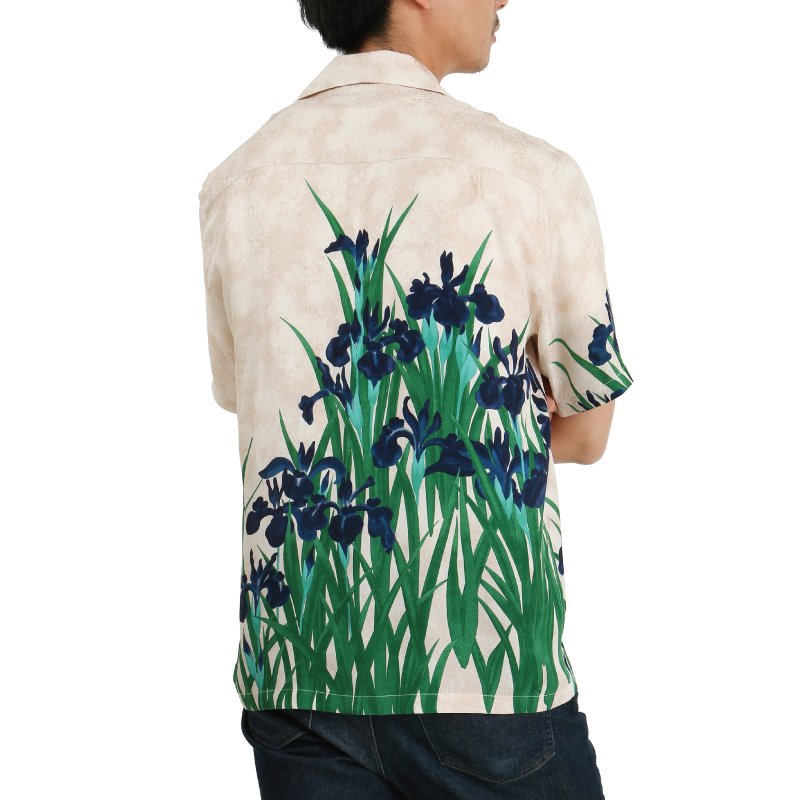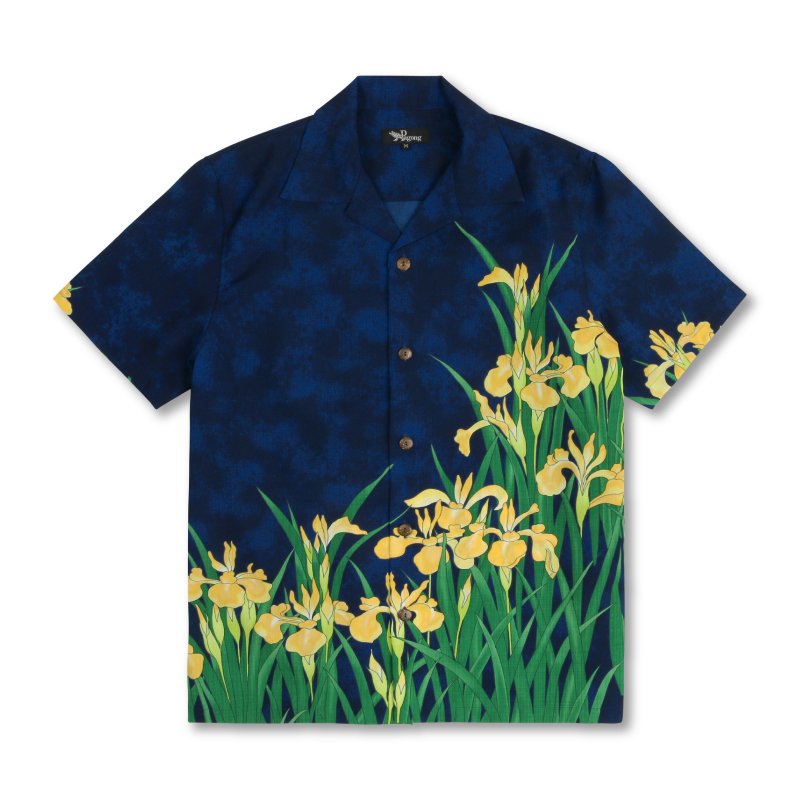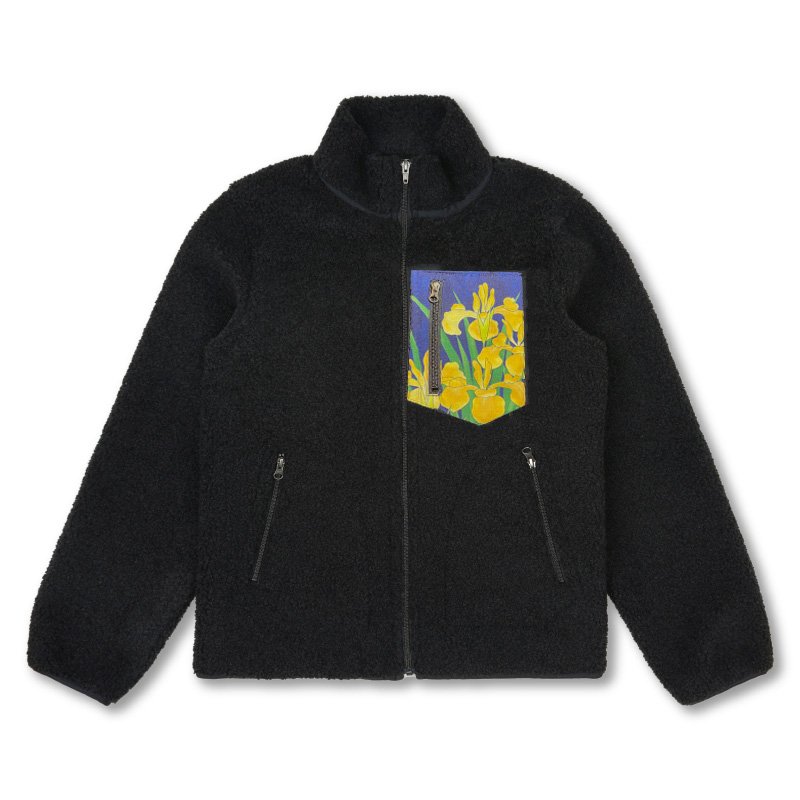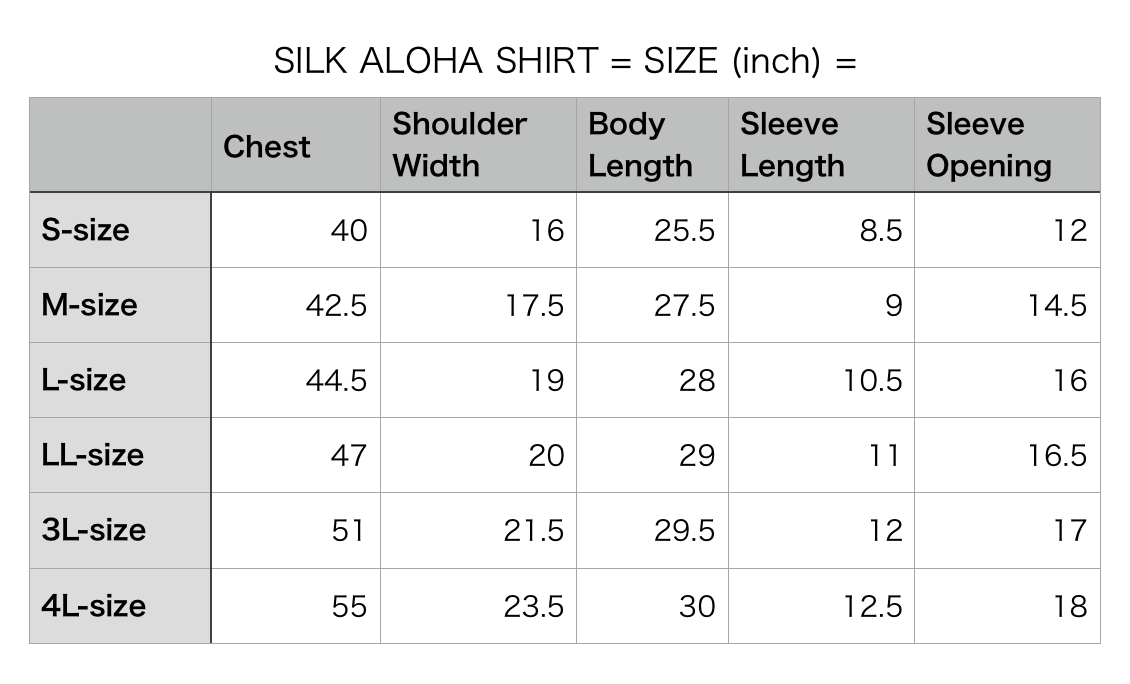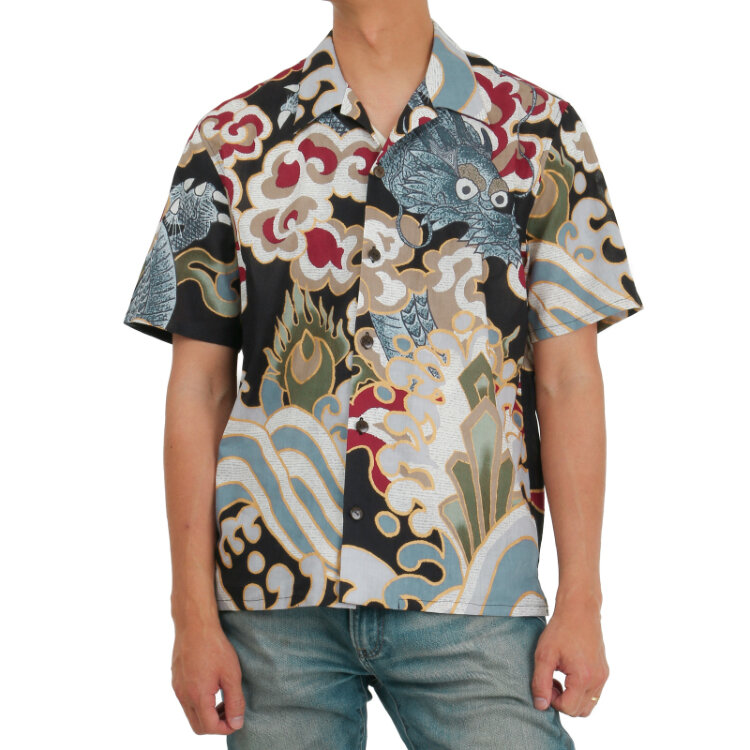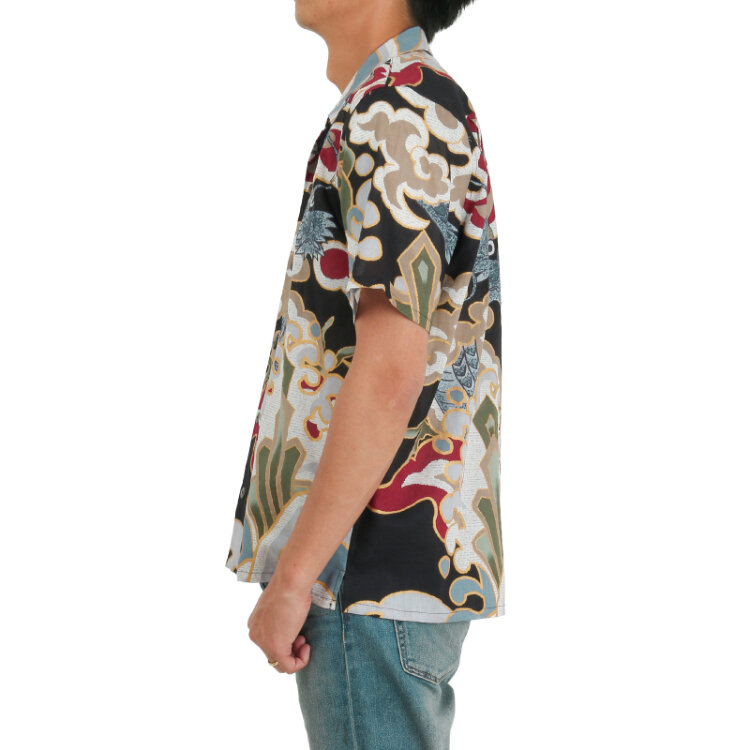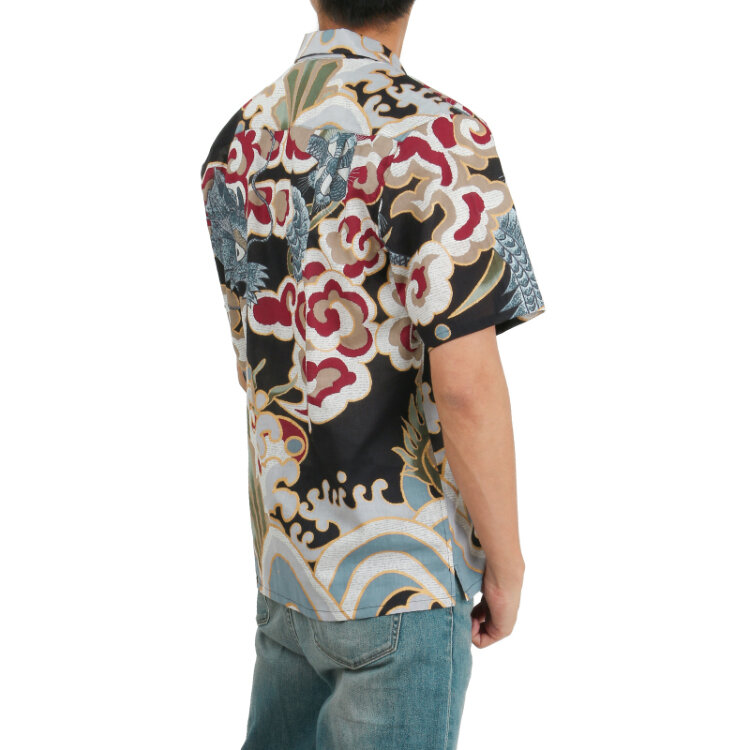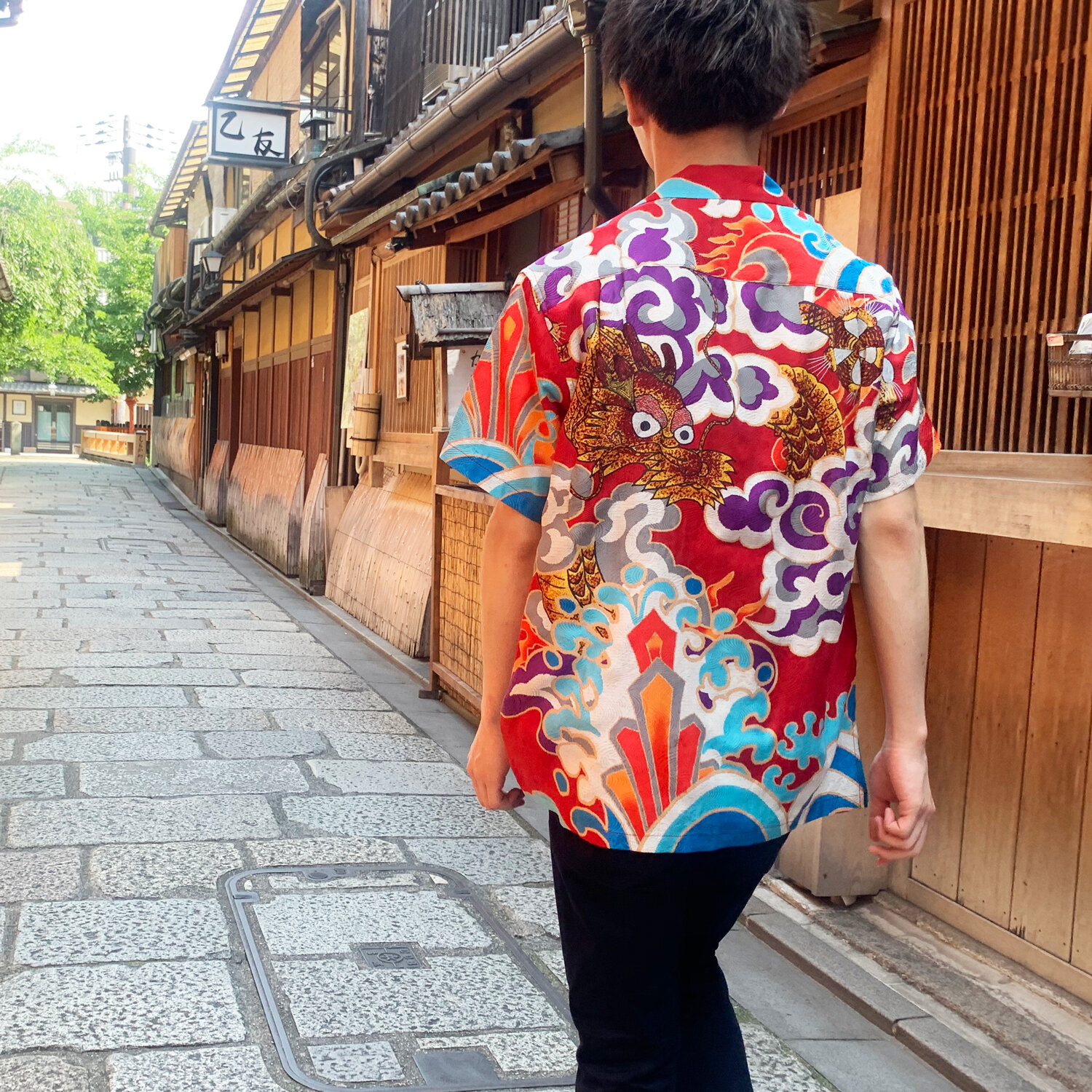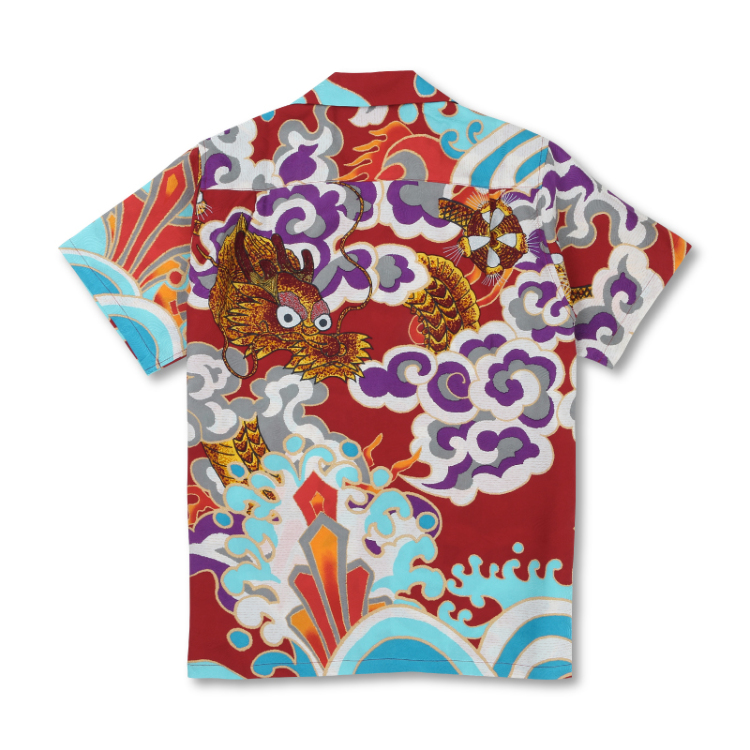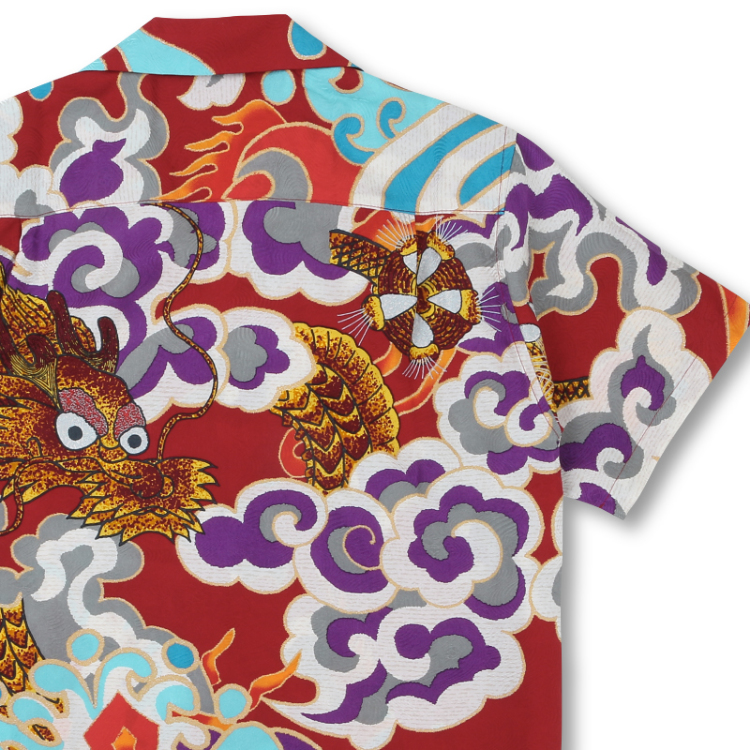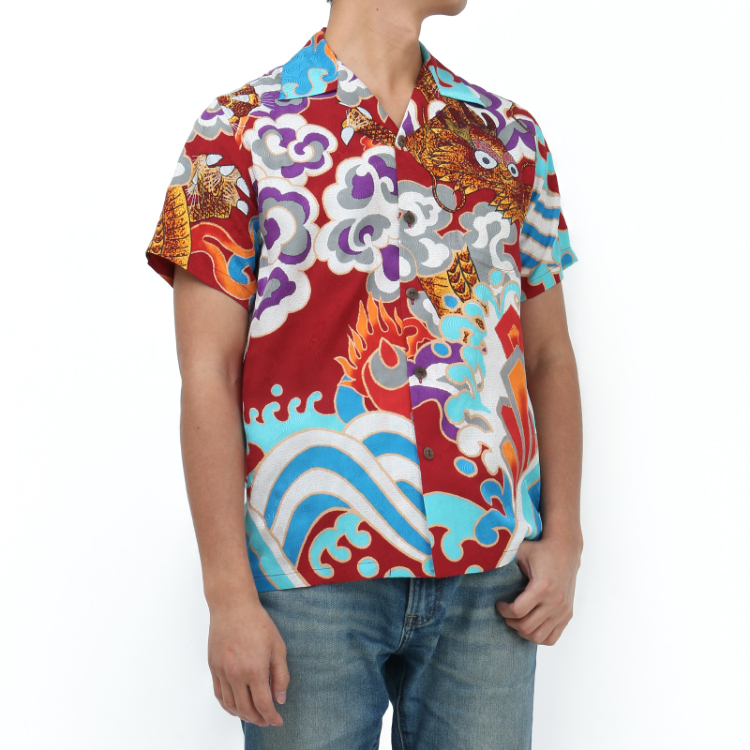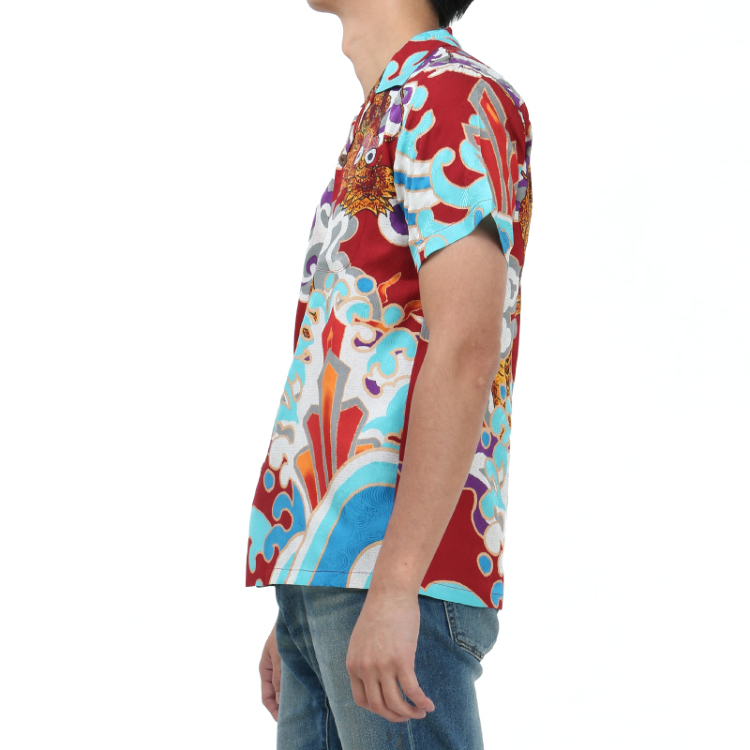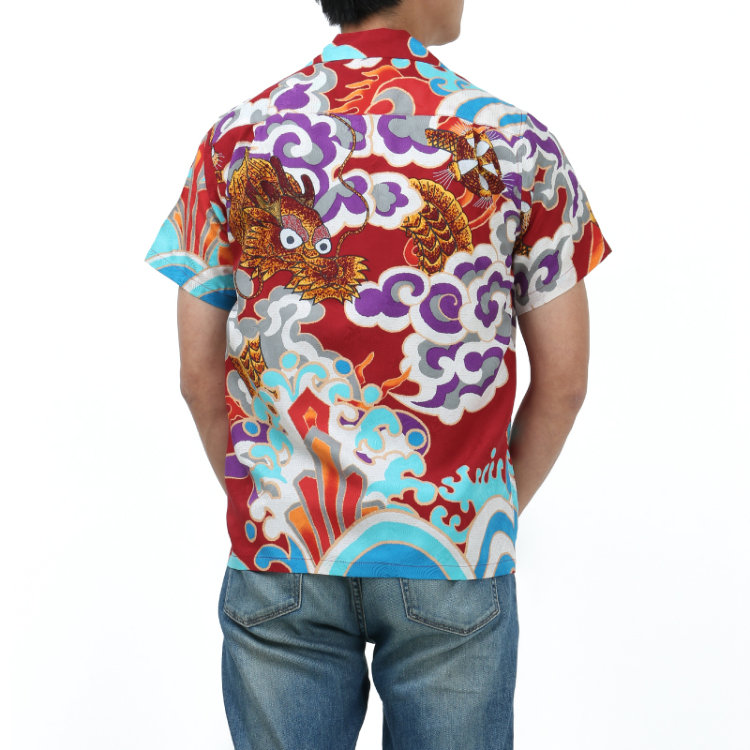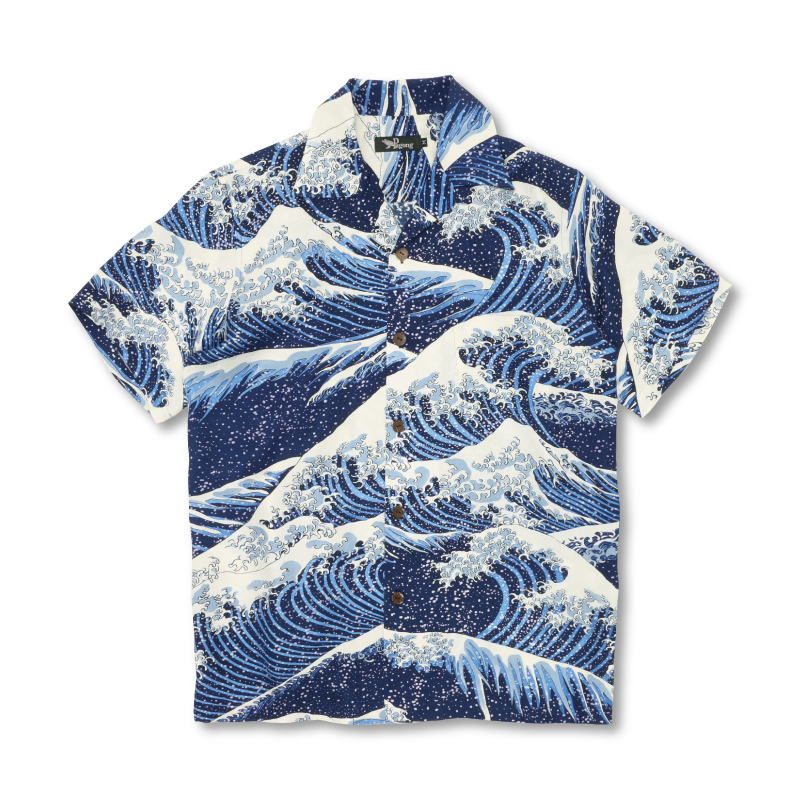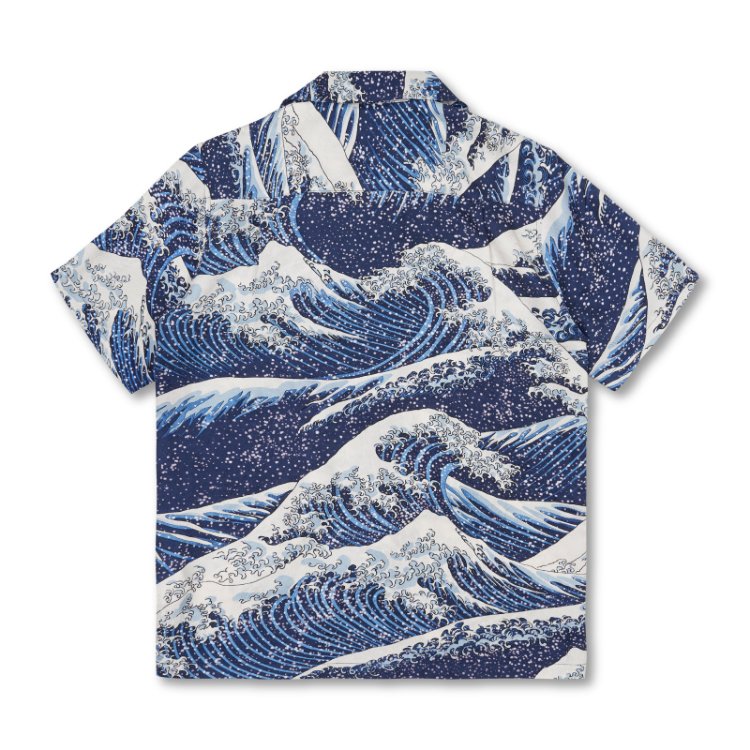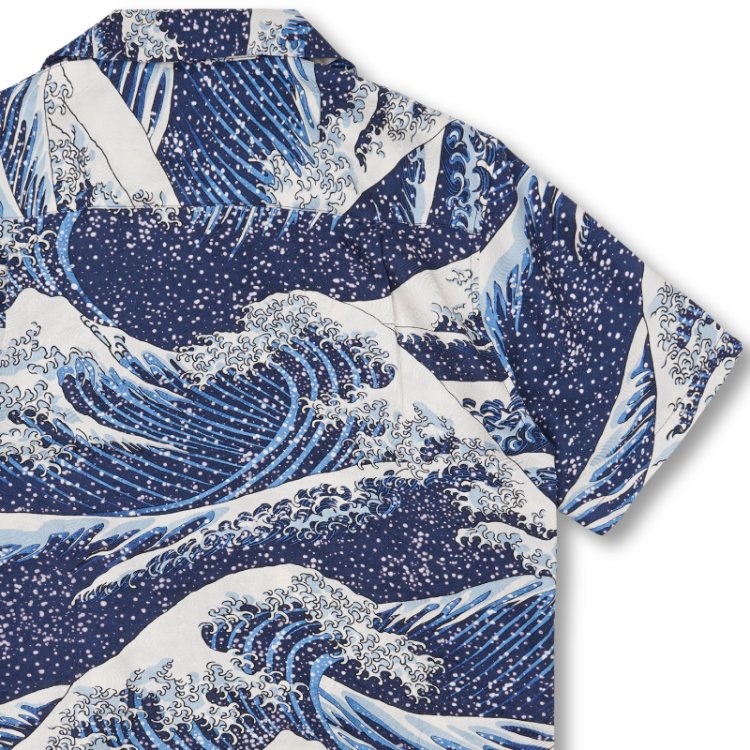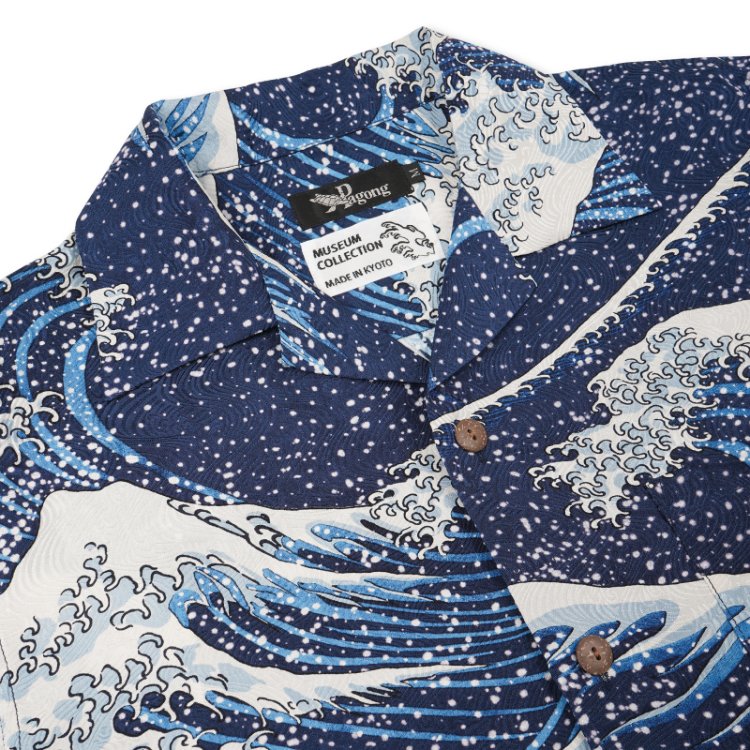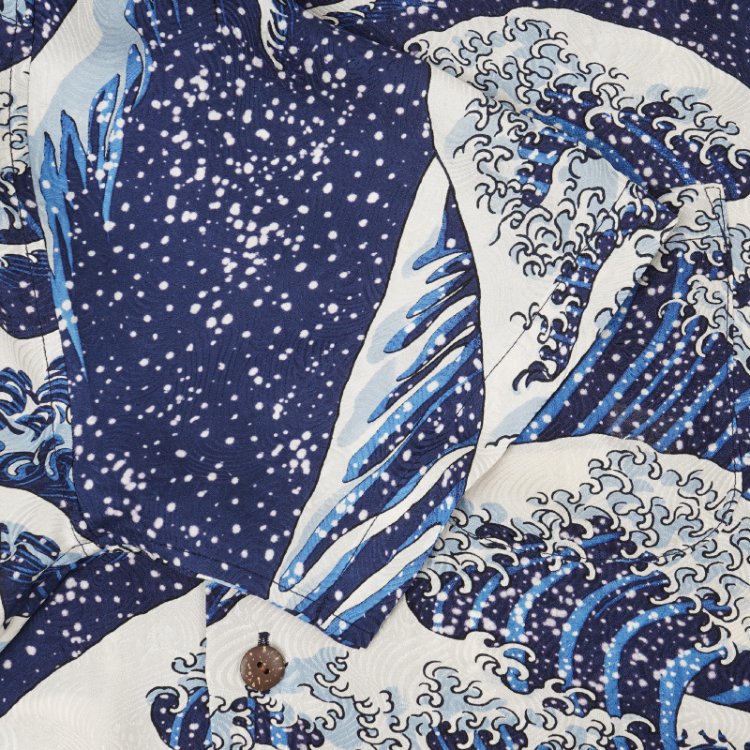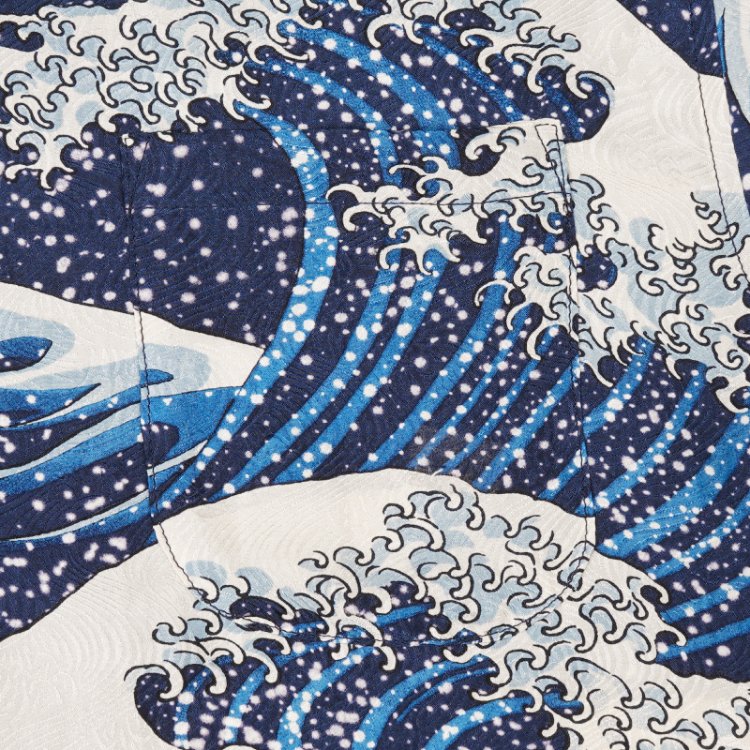"Japanese Irises" Silk Aloha Shirt
Japanese name/燕子花 (Kakitsubata)
-About-
This exquisite pattern was inspired by a work of art in the collection of the Metropolitan Museum of Art in New York called “Irises at Yatsuhashi (Eight Bridges)”, a pair of six-panel folding screens or “byobu” by Japanese artist Ogata Korin (1658-1716) of the Rimpa school. Born and raised in Kyoto, Korin became an official painter for the royal court in 1701, with Irises being painted just after receiving this honor.
Korin’s focus on irises seems to have many hidden meanings which stem from Japanese literature written over 1,000 years ago; telling of the noble class putting the iris in high regard due to its purple color, which could purify negative energies, and protect those who wore it. The flower was also believed to bring happiness and good fortune, as well as symbolize wisdom, hope, trust, and valor; therefore becoming a pattern which is often seen used on ceremonial kimono.
We are delighted to have been given official permission to use this extraordinary painting from the Metropolitan Museum of Art in New York, to which Pagong has implemented the dye technique of Kyoto Yuzen.
・Currency : US Dollar (USD)
・100% Silk (Custom-woven Jacquard )
・Made in Japan
・Classic-fit Aloha shirt
・Coconut buttons
・Dry-clean
Japanese name/燕子花 (Kakitsubata)
-About-
This exquisite pattern was inspired by a work of art in the collection of the Metropolitan Museum of Art in New York called “Irises at Yatsuhashi (Eight Bridges)”, a pair of six-panel folding screens or “byobu” by Japanese artist Ogata Korin (1658-1716) of the Rimpa school. Born and raised in Kyoto, Korin became an official painter for the royal court in 1701, with Irises being painted just after receiving this honor.
Korin’s focus on irises seems to have many hidden meanings which stem from Japanese literature written over 1,000 years ago; telling of the noble class putting the iris in high regard due to its purple color, which could purify negative energies, and protect those who wore it. The flower was also believed to bring happiness and good fortune, as well as symbolize wisdom, hope, trust, and valor; therefore becoming a pattern which is often seen used on ceremonial kimono.
We are delighted to have been given official permission to use this extraordinary painting from the Metropolitan Museum of Art in New York, to which Pagong has implemented the dye technique of Kyoto Yuzen.
・Currency : US Dollar (USD)
・100% Silk (Custom-woven Jacquard )
・Made in Japan
・Classic-fit Aloha shirt
・Coconut buttons
・Dry-clean
Japanese name/燕子花 (Kakitsubata)
-About-
This exquisite pattern was inspired by a work of art in the collection of the Metropolitan Museum of Art in New York called “Irises at Yatsuhashi (Eight Bridges)”, a pair of six-panel folding screens or “byobu” by Japanese artist Ogata Korin (1658-1716) of the Rimpa school. Born and raised in Kyoto, Korin became an official painter for the royal court in 1701, with Irises being painted just after receiving this honor.
Korin’s focus on irises seems to have many hidden meanings which stem from Japanese literature written over 1,000 years ago; telling of the noble class putting the iris in high regard due to its purple color, which could purify negative energies, and protect those who wore it. The flower was also believed to bring happiness and good fortune, as well as symbolize wisdom, hope, trust, and valor; therefore becoming a pattern which is often seen used on ceremonial kimono.
We are delighted to have been given official permission to use this extraordinary painting from the Metropolitan Museum of Art in New York, to which Pagong has implemented the dye technique of Kyoto Yuzen.
・Currency : US Dollar (USD)
・100% Silk (Custom-woven Jacquard )
・Made in Japan
・Classic-fit Aloha shirt
・Coconut buttons
・Dry-clean
Japanese Irises
燕子花 (Kakitsubata)
All of our 100% silk aloha shirts have our logo of “sea turtle and wave”, woven into our custom-made silk fabric.
We take pride in our clothing being designed, dyed, steamed, washed, and sewn entirely in Kyoto, Japan. Over this intricately woven pattern, we dye our designs…
Pagong’s personal archives house 6000 Kimono patterns, which we choose from, as well as from museum archives.
If there is anything we can help you with, please feel free to let us know.
Contact Form >> www.pagongkyoto.com/contact














